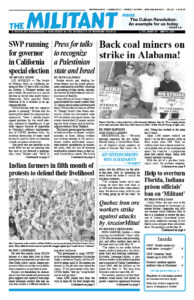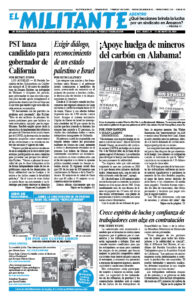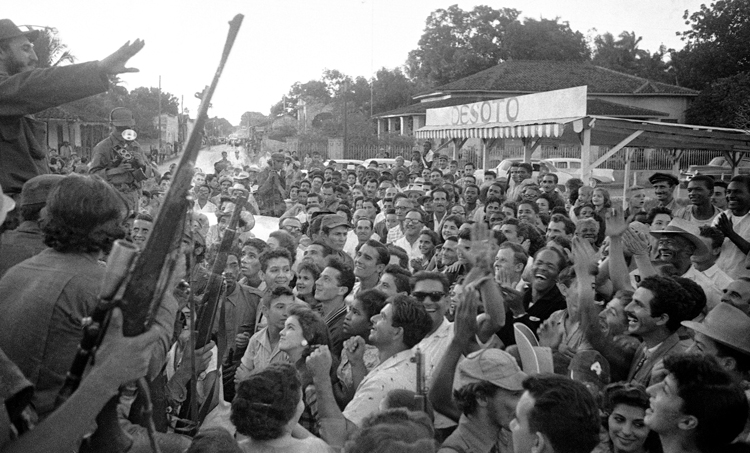“Cuba and the Coming American Revolution: The 60th Anniversary of Two Historic Victories of the Cuban Revolution and Their Significance for Building a Revolutionary Party in the United States — Then and Now” was the featured talk at the Socialist Workers Party’s Midwest conference held in Chicago April 24. The speaker was SWP National Committee member Mary-Alice Waters. (See article in May 10 Militant.)
Waters focused on how Fidel Castro, Che Guevara and other leaders of the revolution led workers and farmers in Cuba to take political power, mobilize to make deeper and deeper inroads against capitalist exploitation and property relations, recognize the socialist character of their accomplishments and Marxist politics of their leadership, and thus transform themselves in the process. Through these mass proletarian mobilizations, the Cuban toilers carried through the first — and so far the only — socialist revolution in the Americas.
She described the impact of that powerful revolution on revolutionary-minded youth in the U.S. who were active in the growing proletarian, Black-led battle to overturn Jim Crow segregation, and how they were won to joining and building the Socialist Workers Party.
The following are Waters’ concluding remarks. They center on lessons working-class fighters and youth in the U.S. today can learn from the example set by the men and women who made and have defended Cuba’s socialist revolution for more than 60 years in the face of Washington’s unremitting efforts to crush them.
Sixty years ago today, Cuban workers, farmers and young people were advancing their socialist revolution and transforming themselves by the hour. That is what was registered by their victory over the U.S.-organized mercenary invasion at the Bay of Pigs in April 1961, and the mass working-class campaign that same year that in less than 12 months taught a million and a half adults of all ages to read and write.
At the same time, here in the U.S. a new stage was opening in the battle to bring down the apartheid-like system of Jim Crow segregation across the South, with its extensions and ramifications for social relations throughout the United States.
Building on the victory of the 1955-56 Montgomery bus boycott movement, the new wave included the Woolworth and other lunch counter sit-ins in the South beginning in 1960, led by Black students; sit-ins and picket lines by students in the North; the 1961 Freedom Rides to desegregate interstate buses; the 1964 Mississippi Freedom Summer; the 1965 Selma-to-Montgomery march; the ever-clearer revolutionary internationalist voice of Malcolm X; and much more.
In the South it was a brutal, deadly battle. When we learned that U.S.-backed counterrevolutionaries in Cuba had tortured and murdered literacy campaign brigadista Conrado Benítez, we identified immediately. The same thing was happening to civil rights fighters here.
The powerful, advancing Cuban Revolution, side by side with the deepening struggle to bring down Jim Crow, helped us understand better than anything the lengths to which the capitalist rulers will go to maintain their power and property. Even more important, we began to understand the kind of revolutionary transformation of ourselves that would be necessary to defeat them.
In the Cuban Revolution we saw the kind of disciplined, revolutionary, proletarian party that must be built. The cadres of the Rebel Army in the Sierra Maestra and Escambray mountains, the July 26 Movement urban underground, and those who took the city of Santa Clara became our heroes.
We looked for those here in the U.S. who were on the same course. And we found them in the cadres of the Socialist Workers Party, the veteran communist leaders who went back to the days of the Russian Revolution and the founding of the communist movement here. We joined up, learning from their years of class-struggle experience.
The proletarian-led movement that brought down Jim Crow didn’t advance and win by dwelling on victimhood. To paraphrase Malcolm X, these men and women were awakening to their humanity, to their own worth. They were awakening to their power.
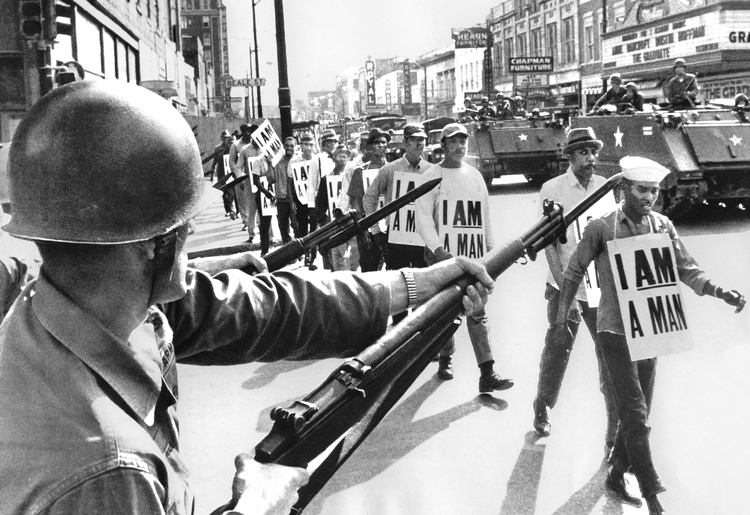
For me nothing captures that more vividly than the photos of the striking sanitation workers in Memphis in 1968, marching with discipline, courage and dignity, wearing signs proclaiming: “I Am a Man.”
Those photos capture the proletarian heart of the battle against Jim Crow. The class forces that were its backbone.
That battle remains an example for us today, as the pent-up anger explodes over decades of police brutality and cop shootings.
For those of us just awakening to proletarian class consciousness in those early years of the 1960s, it was obvious that the source of reaction and racism was not backwardness on the part of “white workers.” Jim Crow was a creature born and nurtured by the capitalist ruling class. And the working class, Black and white, was being transformed by the unfolding social revolution against it. More and more workers, whatever our skin color, confronted the same bosses, had jobs in the same workplaces, fought alongside each other in the same shop-floor and union battles.
That was the same lesson we were learning from our Cuban comrades, and for more than six decades that example of the Cuban Revolution has continued to enrich our understanding of the class road forward for the working class and our allies here.
I want to give two examples that are relevant to the social struggles we’re all in the midst of today.
‘Systemic,’ yes. But what system?
“Systemic racism” is a term that has recently come to be widely bandied about in the U.S. by liberals and many who consider themselves “progressives.” For many it’s a code word, another way of saying the enemy is “white people” or, more vaguely, “white supremacy.” It’s often wielded with a great deal of venom, as a battering ram against “white workers.” It has become an outright assault on class solidarity.
But you have to ask yourself, “Is there systemic racism in the U.S.?”
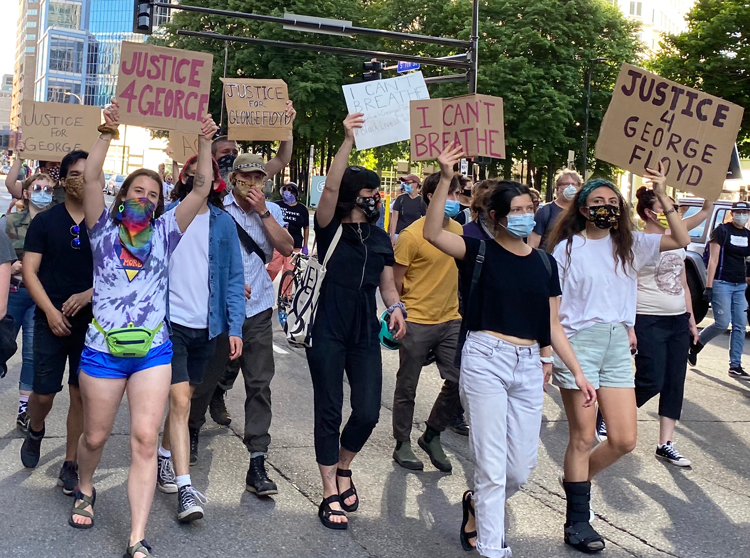
The only possible answer is, “Of course there is.” But the system is capitalism. Not light-skinned people. Not what is portrayed as deeply ingrained attitudes of white supremacy.
Capitalism cannot exist without pitting workers against each other. It can’t exist without fomenting divisions to weaken our collective ability to limit the owners’ exploitation of our labor power and their drive to increase their portion of the value we produce.
This is what the communist movement has explained and educated about for 175 years. Racism, like women’s oppression, the destructive plunder of nature’s bounty, and imperialist wars, won’t be eradicated as long as capitalism exists. Moreover, it will take a mighty, consciously led battle to eliminate the legacy of all capitalist oppression and degradation when the working class takes power out of the hands of the propertied rulers.
The only road to eradicating systemic racism is deepening working-class unity, class struggle, class consciousness, which increasingly becomes communist consciousness — an understanding of capitalist power and property.
If we don’t know where “systemic racism” comes from, then we can’t explain the deep inroads that have been made in Cuba over the last 60 years in the fight against racism.
At the same time, there is one big difference between Cuba and the United States that we should take note of.
African Americans are not simply an ethnic or racial minority. They are an oppressed nationality, registered by statistics on health, education, jobs, housing, maternal and infant mortality, and more. That nationality wasn’t created by slavery. It was forged over decades in struggle against the bloody counterrevolution that drove back gains fought for and won by working people, Black and Caucasian, during Radical Reconstruction in the decade after the Civil War and abolition of slavery. The system we knew as Jim Crow was born in the wake of the bloody defeat of Radical Reconstruction throughout the territory formerly ruled by the slavocracy.
This defeat in the late 19th century was the greatest one ever suffered by the working class in the U.S., and we’re still living with its consequences. The African American nationality was forged in struggle against these conditions imposed on them. As explained by SWP National Secretary Jack Barnes in Malcolm X, Black Liberation, and the Road to Workers Power, it’s a proud history of battle. In fact, a “mind-boggling” one.
But the history of the class struggle in Cuba is different. They never lived the experience of the U.S. Civil War, the conquests of Radical Reconstruction, its defeat and then decades of Jim Crow.
In Cuba the battle for the emancipation from slavery was intertwined from the outset with the decades of war for independence from the Spanish crown. Those twin battles against Spanish colonial rule and the slaveholding planter class brought together leaders who themselves were former slave owners, such as Carlos Manuel de Céspedes, as well as liberated slaves and escaped Chinese indentured laborers. Together they were the backbone of the “Mambí” army.
Elements of Jim Crow were brought into Cuba by the rising U.S. imperialist power as Washington imposed its rule on Cuba in the first half of the 1900s. But it was a pale reflection of the Jim Crow violence and terror that reigned in the U.S. for decades — the closest thing to fascism that ever existed on this continent.
Do prejudice and discrimination based on skin color still exist in Cuba? Yes, of course they do. There remains a job to be done that Cuban revolutionists are the first to recognize. But unlike in the U.S., dark-skinned Cubans are not an oppressed nationality. When Cuban President Fidel Castro in 1975 told a cheering crowd of hundreds of thousands that “African blood flows freely through our veins,” he was not speaking of a minority. He was speaking to the large majority of Cubans — proud of their history, their African blood and their culture.
It’s a difference most U.S. visitors to Cuba don’t understand. It flies in the face of the distorted “history” increasingly taught in U.S. schools under the banner of what’s called critical race “theory.”
Visitors coming to Cuba from the U.S. on different brigades — for May Day, or other events — often arrive with the arrogant notion they have something to teach their Cuban hosts about racism and what should be done about it in Cuba. When Cubans of all shades of skin patiently explain, “Our history is different,” many of these visitors either simply don’t understand or intentionally reject what they’re being told. They consider it ignorance, at best, or a shame-faced cover-up, at worst. It upends everything they’ve been taught, or often everything they’ve been promoting, about the original sin of whiteness.
Due process workers fought for
There is a second example of class-struggle lessons we have learned — and continue to learn — from the political and moral stance advanced by the Cuban Revolution. It’s an example that has lessons for thinking about the trial of former Minneapolis cop Derek Chauvin, who was convicted April 20 of murdering George Floyd.
It was obvious from the opening day of the trial that the ruling class had already decided that whatever they had to do, Chauvin was to be convicted. Cops, whatever their skin color, aren’t generally convicted for killing or brutalizing toilers. We all know that. In this case, however, the U.S. rulers in their big majority had decided that a conviction was the lesser evil.

They concluded they had to do something in face of rising anger against police brutality that produced the massive demonstrations across the country in cities and towns, large and small, during the first weeks after the on-camera death of George Floyd last May under the knee of Minneapolis cop Derek Chauvin.
Those took place in the days and weeks when the banner “Black Lives Matter” was viewed by millions of working people and youth across the country and indeed around the world as a bold assertion, “Yes, this is our struggle, all of us together.”
Those were the days and weeks before the statements and actions of anarchists and other anti-working-class elements — posturing as the action “leaders” of Black Lives Matter — hijacked those words and that solidarity. Hijacked them by encouraging or apologizing for looting, arson, and wanton destruction of property that devastated small-business owners and working people, above all in Black and other working-class neighborhoods.
Before such misleaders began to single out people who are Caucasian — sometimes simply enjoying a meal at an outdoor cafe — for abuse and intimidation for no other reason than the color of their skin.
The staging in the courtroom said it all. On one side you had the prosecution with a legal team of I don’t know how many lawyers. They included a team of “volunteers” from top corporate law firms, perhaps a dozen or so, who were assembled on orders of Minnesota’s Democratic Party governor and attorney general. On the other side was Derek Chauvin, with his one defense lawyer and a legal assistant retained by the Minnesota police association, sitting alone.
The traditional “blue wall” of support for a fellow cop was scarcely to be seen, inside the courtroom or beyond. To the contrary, you had an unprecedented lineup of one after another after another top-ranking officers of the Minneapolis cops testifying against Chauvin, insisting that nothing in “their” police training or procedures or practice had anything to do with what happened.
You had a courthouse ringed with barbed wire and cops, and a revengeful crowd being spurred onward by capitalist politicians like California Democratic congresswoman Maxine Waters, who called on people “to get more confrontational” if the jury didn’t return a murder conviction. You had media personalities like Chelsea Handler declaring it was “pathetic” that a trial was needed “to prove that Derek Chauvin killed George Floyd when there is video of him doing so.”
And Joseph Biden, president of the United States, stating publicly — before the jury even told the judge they had a decision — that he was “praying” for “the right verdict.” In fact, Democratic Party politicians, from Biden and Kamala Harris on down, had been striving for months to channel the justified outrage against cop brutality to their benefit at the ballot box in November 2020.
They had been working overtime to divert the rising anger and to demobilize the explosion of struggles that had initially spread across the country. Prospects to draw in broader layers of the population had already been undermined by self-proclaimed “leaders” who refused to condemn the looting and burning of retail or government targets. Disciplined actions to demand the arrest and prosecution of cops involved in cases of brutality and killings were often derailed by lobbying for so-called police reform, sometimes demagogically and falsely packaged as calls to “defund” the police.
Every day, as the Minneapolis trial went on, this atmosphere intensified. It was like a Roman circus cheering for the lions. A trial by “social media.” For the first time ever, a criminal trial in Minnesota was broadcast over television — nationwide over most major TV news networks. A spectacle, not a trial!
There were few voices to be heard reminding those who would listen that every person has the right to a trial by a jury of their peers. That the accused is innocent until proven guilty, beyond the reasonable doubt of a reasonable person. That the jury’s verdict must be unanimous.
As any worker who has ever found himself or herself entangled in the U.S. “justice” system knows, these constitutional guarantees of due process are important to us. These are rights the working class has fought for and won during centuries of struggle. We need them to protect us against the state and against its court system. The methods that have been used against Chauvin have been, are, and will again be used against us.
As Ramón Labañino of the Cuban Five so memorably said, “It’s the poor who face the savagery of the U.S. ‘justice’ system.”
That’s why, certainly for myself and I think for most of us here, we’re not joining in the chorus, “Oh what a wonderful trial and verdict!” I have no sense of satisfaction, no joy.
For the working class, this trial was not a victory. It set precedents that undermine our rights.
Moral high ground
It’s useful to go back to a controversial episode in the opening months of the Cuban Revolution. Following the defeat of the Batista dictatorship, revolutionary tribunals were established by the new government to try the defeated regime’s most notorious, brutal torturers and murderers who had not managed to flee to the U.S. or elsewhere.
Reading Fidel’s assessment of those events half a century later is a real education. As he so often did, Fidel took the moral high ground for the working class. You’ll find this in the book-length autobiographical interview with Fidel conducted by journalist Ignacio Ramonet. It’s published in English under the title My Life, and in Spanish Cien horas con Fidel.
“When the war ended,” Ramonet asked Fidel, “you and your followers had promised to bring to trial and eventually put to death members of Batista’s repressive forces, and you created the ‘revolutionary tribunals’ that carried out a purge that many observers characterized as excessive.”
Fidel replied, yes, “They were tried, and quite a few were given the death penalty.” Ramonet followed up and asked Fidel if he thought those trials were a mistake.
And Fidel answered: “I think the error may have been in the manner, shall we say, that those trials were conducted, using public places and allowing the proceedings to be attended by a great number of our countrymen who were justly outraged by the thousands of crimes that had been committed. That might be in conflict, and in fact was in conflict, with our own ideas of justice. And it was very much exploited by the United States.
“We lost no time in rectifying what was unquestionably a mistake,” Fidel said. “But those guilty of genocide were tried and punished according to laws that had been passed long before by the revolution, during the war. We don’t regret having done it, although I do feel pity when I remember how bitter it must have been for [the accused] to experience the hatred that the people quite rightly felt for them because of their repugnant crimes.”
Fidel’s clarity and class understanding of justice were an example for all of us. He went on to explain how he and other leaders of the revolution came to the opinions he was expressing.
In Cuba in 1933 when the Gerardo Machado dictatorship — which was far less brutal than the Batista regime in the 1950s — fell, Fidel said, “Machado’s people were dragged through the streets; there were lynchings, houses were invaded and attacked, people sought vengeance, revenge. … So throughout the entire [revolutionary war in the mountains], thinking about the mass violence that can accompany the victory of the people, we warned our country about that. …
“[T]his may have been the only revolution in which the main war criminals were tried and brought to justice, the only revolution that didn’t rob or steal, didn’t drag people through the streets, didn’t take revenge, didn’t take justice into its own hands,” Fidel said.
“No one was ever lynched here,” and there were no bloodbaths, “because of our insistence and our promise: ‘War criminals will be brought to justice and punished.’” But, Fidel added, “We committed the error I explained to you: too many people taking part in it. … [Y]ou see a man who’s being tried before thousands of people, and even if he’s the worst sort of murderer, you tend to take pity on him.”
Police serve rulers and their state
Police in a capitalist state exist to defend the property and prerogatives of capital and the dominance of that state. That’s why they exist. That’s the class they serve. That won’t be changed by “police reform” peddled by one or another wing of the rulers and their parties.
In Cuba when Batista fell, the revolutionary forces took over every single police station. They disarmed the police. The torturers and murderers were arrested and tried. The rest were sent home without their weapons and told to report back in a month to be given a new job. Not in the police department; you’ll be given a new job.
The new Revolutionary National Police was built from the ground up, from scratch. Led by combatants of the revolution who had fought in the Sierras, in the Escambray, in the cities.
And it was the Revolutionary National Police who suffered the highest rate of casualties in the battle of Playa Girón.
That battle smashed forever the myth of the invincibility of U.S. imperialism. Just as the battle of Cuito Cuanavale in Angola, nearly 30 years later, smashed the myth of the invincibility of the South African apartheid army and air force.
The Cuban Revolution is living proof in our lifetime of what working people are capable of accomplishing with class solidarity; class consciousness; focused, persistent education; and a revolutionary leadership of the caliber of Cuba’s revolutionary cadre. A leadership forged in struggle, in combat, including, to paraphrase Fidel, “the kinds of sacrifice that entails.”
It gives us tremendous satisfaction to be able to celebrate all of this here tonight. We learn from the triumphs of the Cuban Revolution, as well as from its errors. It’s our revolution too.
But our responsibility is not to applaud the accomplishments of Cuba’s toilers. Our job is right here. We must never forget that. We’ll hear from many of you during the discussion this evening about struggles we’ve been part of, experiences we’re having along this course — on the job, in the union, and as part of the fight for Black rights, for women’s rights, and other social issues of importance to our class.
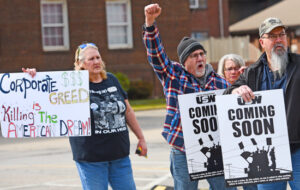
We’re beginning to see a slight increase in job actions against the conditions employers have taken advantage of the pandemic to impose on us. A few small strikes, not small in importance, but small in the economic and social weight they have today. But each one is an example from which our class can learn and gain confidence.
Whether it’s the Teamsters locked out at Marathon Petroleum in Minnesota, coal miners at Warrior Met in Alabama, steelworkers at Allegheny Technologies, actions by nurses, or resistance by workers at Walmart, Amazon and elsewhere.
These are part of the expanding union of workers along this line of march.
In the pages of Cuba and the Coming American Revolution, you’ll find the account by Jack Barnes of his experiences in Cuba in the summer of 1960, as the revolutionary consciousness of working people was accelerating at breakneck speed. Everyone knew an invasion organized by U.S. imperialism was coming. It was just a question of when, a race against time. Everything was focused on being prepared.
The course of action was, “Learn in the morning, teach in the afternoon.”
Jack told a militia commander he had gotten to know, and whose opinions he respected, that he wanted to stay in Cuba to be part of that battle. The militia commander’s response was, “No. We will be ready for the invasion, and we will defeat it. Your job is not here. You should return and find others who feel the way you do about the Cuban Revolution and work to make a revolution like ours in the United States.”
And he added, “Find the party that you think is on that course and join it.”
That’s exactly what Jack did. It was a course of conduct for a lifetime. It’s our course that we celebrate here today.
